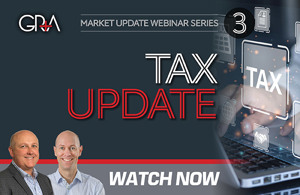
With 1 July fast approaching, it is a good time to alert readers to some of the detail around the new bright-line and rollover relief rules which come into force from that date.
Reduction of bright-line period to two years
As most readers will be aware, the bright-line period officially reduces to two years for all residential property from 1 July. This means if you enter into a sale and purchase agreement on or after 1 July 2024, the bright-line rule will only apply if you have owned the property for less than two years.
The usual date for measuring when ownership of the property starts for the purposes of the bright-line rule is the date that you settled the purchase. As a result, if a purchase settled prior to 1 July 2022, any sale on or after 1 July 2024 will not be taxable under the bright-line rule.
While settlement is typically the start date of the bright-line period, it can be the date that you enter into the agreement if you have bought the property “off the plans”. So for “off the plans” sales, the start of the bright-line period is more friendly because it is the date you have a binding agreement, which will be much earlier than settlement.
New main home rule
While there is a “new” main home rule to accompany the two-year bright-line period, it is actually a return to a previous main home rule. Under this main home rule you are exempt from the bright-line rule if most of the property was used as your residential home for most of the time that you owned it. This is a return to the “all or nothing” main home exemption, under which you are either exempt from bright-line rule or you are not. This contrasts with the proportionate approach that exists under the current 10-year bright-line rule, which will cease to apply from 1 July 2024. We prefer the old rules (that are being reinstated), as they result in fairer outcomes.
Rollover relief provisions
From 1 July there are a new set of “rollover relief” provisions in place. Rollover relief is relevant when you restructure the ownership of a residential rental property within your family group. For example, you might own a property personally and want to move it into company or trust ownership. Without rollover relief, such a transfer could trigger tax to pay under the bright-line rule if you have not owned the property for two years, and/or it can trigger a resetting of the bright-line period for a new two-year timespan. If rollover relief applies, neither of these things happen.
From 1 July, rollover relief can be claimed when property is transferred between two parties that are deemed to be “associated”, as long as that association has existed for two years prior to the transfer. We find this requirement for the relationship of association to exist for two years prior to the transfer odd. The fundamental philosophy behind the rollover relief rules is that they are meant to apply when there is no change in substance of the economic ownership of the property. For example, if I transfer a property to a newly formed company of which I am the sole shareholder, there is no change of economic ownership, and therefore in principle rollover relief should apply. However, under these rules it will not apply because the company did not exist two years ago and therefore the relationship of association has not existed for two years.
There is slightly more concessionary treatment available where a property is transferred to a trust.
Summary
In summary, the reduction of the bright-line period to two years is obviously a welcome move for property investors, and the continued existence of rollover relief provisions is helpful as well. However, the introduction of a two-year period of association to be able to claim rollover relief is an unusual and unhelpful move. It would not surprise me to see amendments to this part of the legislation as time progresses, and if that happens it would be useful to see this two-year association requirement dropped
In the meantime, if you have been contemplating restructuring but were reluctant to do so because the property in question was caught by the five-year or 10-year bright-line period, from 1 July there is going to be scope to restructure – but seek professional advice first because the rollover relief provisions are complex.
If you are planning on investing in property, either in an existing group or just starting out, we invite you to make contact with GRA to discuss. Our team are experts in property and business tax structures, and we would be pleased to meet with you for a consultation (free to new clients).

Matthew Gilligan
Managing Director and Property Services Partner
Did you like this article? Subscribe to our newsletter to receive tips, updates and useful information to help you protect your assets and grow your net worth. We're expert accountants providing expert advice to clients in NZ and around the world.
Disclaimer: This article is intended to provide only a summary of the issues associated with the topics covered. It does not purport to be comprehensive nor to provide specific advice. No person should act in reliance on any statement contained within this article without first obtaining specific professional advice. If you require any further information or advice on any matter covered within this article, please contact the author.
Comments
Testimonials
Hi Salesh, I just wanted to send you an email on behalf of GRA to say how fantastic we have found your company to date. As you know, Ben and I joined GRA a couple of months ago and have just found you so amazingly helpful in getting our new property set up correctly and sorted out. We have what I would consider a rather complicated structure as a result and it’s a fantastic feeling to know that we are getting everything done in the best way possible. We have just had approval to put a minor dwelling on the property which will make a massive difference in terms of cash flow and obviously value, something we would never have even thought of without GRA and which we are very excited about. During the buying process we attended a seminar with Matthew and from the outset thought he was fab. We therein signed up for property school and found this nothing short of fantastic. The content was relevant, up to date and comprehensive, but more importantly it was taught in a way that we could actually understand and really get value out of. I wanted to mention also, that everybody GRA have recommended to us has been just so efficient and absolute masters at what they do. A wonderful network of people that we feel very lucky to now be able to call on. From Kris Pederson and Bryan Rist who put our mortgage together to the insurance guys they then referred us to, I’m super impressed. Within GRA, Ellery has probably turned things around for us faster than I’ve ever known before, something which we appreciated so very much when it came to crunch time. She’s always a pleasure to deal with and again, we’re stoked. We’ve just settled on the property today and are about to go and get the keys. I’m pretty pumped and hence this email is probably rather excitable. So, a massive thank you to you Salesh, the partners for such a fabulous 6 weeks at property school and everyone at GRA for their help. May this be the start of our property empire. Thanks again, - A & B - July 2015
Gilligan Rowe and Associates is a chartered accounting firm specialising in property, asset planning, legal structures, taxation and compliance.
We help new, small and medium property investors become long-term successful investors through our education programmes and property portfolio planning advice. With our deep knowledge and experience, we have assisted hundreds of clients build wealth through property investment.
Learn More








































